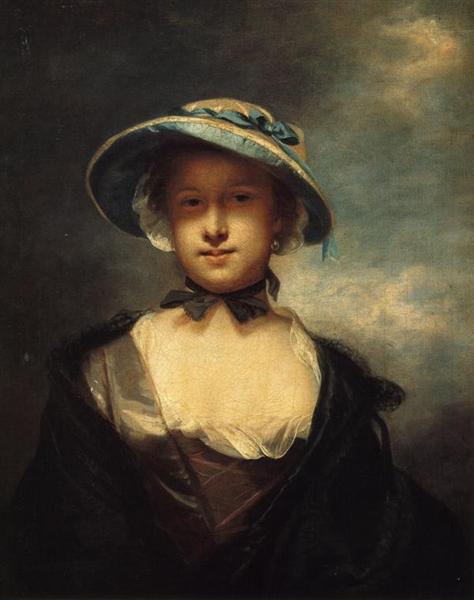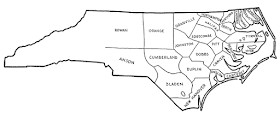 When I began interested in researching inventories of North Carolina residents and noting the wealth of goods and textiles of these women a friend of mine recommended this book. "Buying into the World of Goods: Early Consumers in Backcountry Virginia" by Ann Smart Martin. I highly recommend that you get a copy to read. It is a great resource of information and sheds light into the consumerism of the 18th century.
When I began interested in researching inventories of North Carolina residents and noting the wealth of goods and textiles of these women a friend of mine recommended this book. "Buying into the World of Goods: Early Consumers in Backcountry Virginia" by Ann Smart Martin. I highly recommend that you get a copy to read. It is a great resource of information and sheds light into the consumerism of the 18th century.Granted there is no book to describe the consumerism of North Carolina settlers, the diary of William Sample Alexander of Mecklenburg County, North Carolina 1770-1778 provides us with one example to the trading that was going up and down the wagon road from Charlotte to Philadelphia and also from Charlotte to Charleston. People were finding ways to seek out worldly goods from the ports of Charleston, Wilmington (NC) and Philadelphia. Granted not everyone was able to purchase worldly goods but to say everyone in the "backcountry" wove their own fabric, were barefoot and wore the simplest of clothing is simply not true. They wanted to be just as fashionable as everyone else and consumerism is very apparent in this diary.
As we continue to update our research and with the accessibility of online collections hopefully this research will help debunk the myths going around in the re-enacting communities as well as in the house museum field that settlers in the backcountry did not wear the latest fashions or had access to worldly goods. It just simply isn't true and this diary along with other resources such as inventories and estate files should help debunk these myths.
[Reference to clothing and textiles to be purchased in Chester County, PA], in the William Sample Alexander Diary #1504-z, Southern Historical Collection, The Wilson Library, University of North Carolina at Chapel Hill.William Sample Alexander diary
 |
| Scan # 4 in the William Sample Alexander Diary approximately 1770 |
As we see on the first page the grocery list of items he has been requested to "fetch" for his family on his trip North.
"Memorandom of things to fetch for the family"
- Blue Sagathy for one suit of clothes
- 1 piece of 4(pound symbol above it?) linen
- 3 pairs of silver buckles
- 1 rain good writing paper
- 1 doz linen handkerchiefs
- white persian red lining (bonnets)
- black tafety with trimmings (bonnets)
- 1 yd cambrick
- 1/2 yd lawn
- 2 calf skins (illegible)
- check silk handkerchief
The bonnets is what struck me as "wow!" Those are fashionable bonnets and the textile items such as cambric, lawn are probably to be used to make caps, aprons and other items.
The next page continues for items for the family and for neighbors
 |
| Scan # 5 William Sample Alexander Diary |
"2 case bottle full rum 1/2 gallon each"red durant for 2 petticoats
3 bibles
2 pairs mens stockings thread & cotten
1 dozen knifes and forks
1 pair black silk mitts
1lb. pepper, 1 lb alspice,1 lb ginger
2oz nutmeg 4 lbs coffee"
Red durant for petticoats and black silk mitts. Swanky! Also note the spices and coffee.
For Sally Thomson: "9 yds pale blue calimanco, 2 1/4 yds cambrick, brown sattin bonnet white lineing and trimmings made at uncle (illegible). 1 1/2 yds of fine holland, womans riding whip horn handle silver & fashionable (illegible) mounted.
For Nancy Graham
1 barcelona handkerchief black
For Mr. Avery
1 calf skin
item crossed out
For Jean Semple - received 1 pound light
11 yds crape black and blue
1 yd black ell wide persian
3 yds black ferritan
1 yd canvas
3 knifes and forks
1 pair black gloves
For Wm Alexander Smith
20 lbs ground red wood received in cash 1 dollar
Here we see request for 3 1/2 yards of blue hair plush, 7 1/2 yds fringe and other items for James Wilson.
While Abraham Alexander asks for 3 pairs stockings to wove in Philadelphia andone the rest to be wove in mits. Received 3 shillings.
Woven mitts? You decide.
This is the final list of items to be purchased for friends and family.
It is noted that from Sally Thomson he recieved 1 half Joe and 7 shillings in racoons (pelts).
Jno. McKnitt
1 brass kettle hold 32 gallons
1 large ivory fan
For John Allen
1 pair womens shoes white or blue damask - 9 inches and 3/4 long so wide as to receive my hand to with my fingers to the toe.
For black ---- one pattern for gown red and white calico, 2 silk handkerchiefs, 2 black 1 check.
What is interesting about this entry is that the pattern for the gown in red & white calico was marked out.
Skipping down to the bottom: Robert Donnal light colored Sagathy for Coat and Jacket with trimmings.
3 bibles
2 pairs mens stockings thread & cotten
1 dozen knifes and forks
1 pair black silk mitts
1lb. pepper, 1 lb alspice,1 lb ginger
2oz nutmeg 4 lbs coffee"
Red durant for petticoats and black silk mitts. Swanky! Also note the spices and coffee.
For Sally Thomson: "9 yds pale blue calimanco, 2 1/4 yds cambrick, brown sattin bonnet white lineing and trimmings made at uncle (illegible). 1 1/2 yds of fine holland, womans riding whip horn handle silver & fashionable (illegible) mounted.
For Nancy Graham
1 barcelona handkerchief black
For Mr. Avery
1 calf skin
item crossed out
For Jean Semple - received 1 pound light
11 yds crape black and blue
1 yd black ell wide persian
3 yds black ferritan
1 yd canvas
3 knifes and forks
1 pair black gloves
For Wm Alexander Smith
20 lbs ground red wood received in cash 1 dollar
Here we see request for 3 1/2 yards of blue hair plush, 7 1/2 yds fringe and other items for James Wilson.
 |
| Both items are from Scan #16 William Sample Alexander Diary |
While Abraham Alexander asks for 3 pairs stockings to wove in Philadelphia and
Woven mitts? You decide.
 |
| Scan #17 William Sample Alexander Diary |
This is the final list of items to be purchased for friends and family.
It is noted that from Sally Thomson he recieved 1 half Joe and 7 shillings in racoons (pelts).
Jno. McKnitt
1 brass kettle hold 32 gallons
1 large ivory fan
For John Allen
1 pair womens shoes white or blue damask - 9 inches and 3/4 long so wide as to receive my hand to with my fingers to the toe.
For black ---- one pattern for gown red and white calico, 2 silk handkerchiefs, 2 black 1 check.
What is interesting about this entry is that the pattern for the gown in red & white calico was marked out.
Skipping down to the bottom: Robert Donnal light colored Sagathy for Coat and Jacket with trimmings.
 |
| Scan #49 William Sample Alexander Diary |
Here we see the invoices for the items purchased on the trip. These pages clarify what was requested since his original list was very cluttered.
Sarah/Sally Thomson
9 yds caliminco
1/4 yd cambrick
1 bonnet ~ this was a brown sattin bonnet with white lining.
1 cap
1 paper box
1 hair pin
1 1/2 yd holland
1 womans whip
Nancy Grams
1 silk handkerchief - black barcelona
Jean Semple
11 yds Crape (blue & black)
1 yd canvas
1/2 set knives & forks
1 pair silk mitts - originally listed as 1 pr black gloves
Jas. Wilson
3 1/2 yds plush (blue)
7 1/2 yds fringe
Jno. McKnitt Alexander: 1 brass kettle (which was to hold 32 gallons) and 1 fan
Widow Edminson
4 1/2 yds Durant at 3/2 per yard = 0: 12:6
I am guessing this was the red durant for 2 petticoats.
Widow Sharp
1 yard persian
3 yds of black ribbon
This page clarifies the possible woven mitts for Abraham Alexander.
2 pair stockings to be wove, 1 pair mens cotton and linen the other womens all cotton for Elizabeth. 1 dollar worth credit? received 2 dollars.
For widow Edminson 1 pair stockings for John, cotten and linen received 5 shillings
For Isaac Alexander 7 pairs of stockings to be wove
Received 40 shillings.
Sarah/Sally Thomson
9 yds caliminco
1/4 yd cambrick
1 bonnet ~ this was a brown sattin bonnet with white lining.
1 cap
1 paper box
1 hair pin
1 1/2 yd holland
1 womans whip
Nancy Grams
1 silk handkerchief - black barcelona
Jean Semple
11 yds Crape (blue & black)
1 yd canvas
1/2 set knives & forks
1 pair silk mitts - originally listed as 1 pr black gloves
 |
| Scan # 49 William Sample Alexander Diary |
Jas. Wilson
3 1/2 yds plush (blue)
7 1/2 yds fringe
Jno. McKnitt Alexander: 1 brass kettle (which was to hold 32 gallons) and 1 fan
Widow Edminson
4 1/2 yds Durant at 3/2 per yard = 0: 12:6
I am guessing this was the red durant for 2 petticoats.
Widow Sharp
1 yard persian
3 yds of black ribbon
 |
| Scan # 51 William Sample Alexander Diary |
This page clarifies the possible woven mitts for Abraham Alexander.
2 pair stockings to be wove, 1 pair mens cotton and linen the other womens all cotton for Elizabeth. 1 dollar worth credit? received 2 dollars.
For widow Edminson 1 pair stockings for John, cotten and linen received 5 shillings
For Isaac Alexander 7 pairs of stockings to be wove
Received 40 shillings.






















